Are you just getting into boating and looking to try an overnight trip for the first time? Or maybe you've been on a few multi-day trips but want to plan your own excursion? Then this the guide is for you! Find all the essential planning and packing tips below to get prepared for your float.
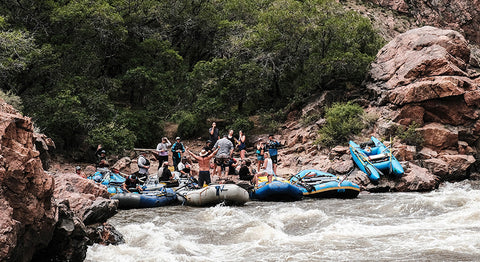
What is a Multi-Day Trip?
Think about how much fun boating down a river is, now just add in backpacking, and you have the multi-day or overnight rafting trip. The upside is that instead of carrying all your gear on your back, you just strap it into your raft and push it down the river. This gives the option to either pack light and have a mobile boat, or get a little glamping in and bring ALL the necessities, plus extra fun and comfortable gear.
Planning and Permitting.
When you start planning your own overnight rafting trip there are a few things to keep in mind. You'll want to choose a section of river that you and everyone in your group is comfortable running. Make sure you read about the rapids and know what you're getting into, and have the knowledge to get out of situations if they arise. Many rivers are permitted to keep the human impact low and conserve the beauty of the land. Some permits only require making a reservation and paying a small fee, while others require entering a lottery and hoping your name gets drawn. Recreation.gov is a great place for river info and to book your permits. Research if a permit is required for the section you want to do and what the mandatory river use stipulations are. Generally, these include bringing a groover to pack out human waste, a fire pan for campfires, a boat pump, a repair kit and wilderness first aid kit, a PFD for each person in the group and safety gear on each boat. This includes a whistle, spare oar or paddle and a throw bag with at least 40 feet of rope.
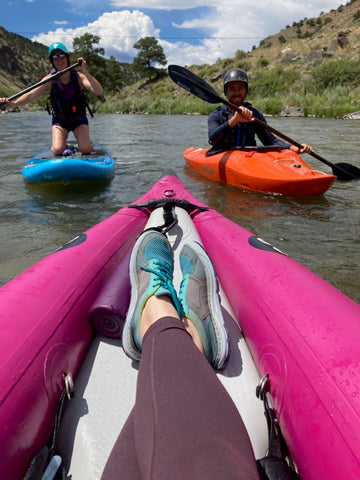
What Gear Do You Need?
In addition to the mandatory requirements, you'll want to consider bringing gear to make things easier for a large group. Kitchen setups with tables, ground tarp, propane cookers and hand washing and dishwashing stations make it easier to cook and keep things sanitary with a larger number of people. If you are a coffee drinker, bring a percolator or large pot to brew cowboy coffee or warm drinks. Don't forget kitchen utensils and pots and pans! Opt to stay simple with just a few items or bring a whole set for longer trips. Bring large coolers with ample space for ice and keeping your food organized and cool on hot summer days. You can save space in the coolers by putting beverages into a drag bag in the water to keep them chilled. Bring plenty of jugs of drinking water and a filter to refill, especially for longer trips.
What Essentials Should You Pack?
As for personal gear, a Paco Pad, sleeping bag and tent are on the top of the list. Even if you opt to sleep outside most nights, a tent or tarp setup is essential for any storm that happens to roll in. Light is also essential. A headlamp or two are necessary but you can also supplement with solar camp lanterns or fairy lights to create an enjoyable camp setting. Bringing a camp chair for around the fire or on the beach is a much needed comfort after a long day of rowing or Paddling.
When packing clothing, take into account what time of year you are going and what weather might come through. Always pack layers, no matter how hot it might be. The weather can change quickly and being near or in the water can make you colder than you think. Bring wool or synthetics for layering when on the boat in cooler months and cotton sun shirts to dip in the water for extremely hot locations. Bring an extra pair of dry camp shoes to keep your feet dry and comfortable and to get you up any side canyon hikes you'd like to adventure into. Bring several sizes of dry bags for clothing, personal items and sleeping gear. Having a mesh gear bag is also handy for keeping non-dry items organized on the boat and in camp. Use your gear bags to keep items dry and orderly so you don't create tripping hazards or lose anything to the river.
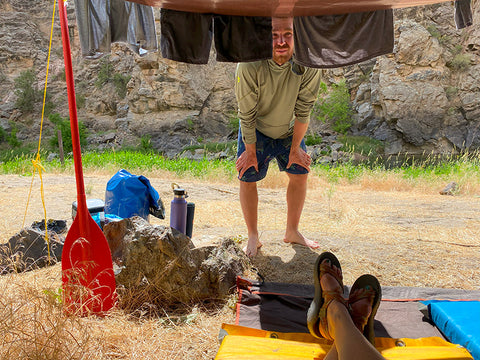
How to Rig Your Boat.
Rigging your boat is very similar to a day trip, except with a LOT more gear. The key is to fit everything in like a puzzle and rig to flip. Just in case. Make sure your throw bag is easy to access and not strapped under all your other gear! For shorter trips with minimal gear, it's easy to suspend what you can from an oar frame and the rest on the floor and strap it down, for longer trips with heavier gear, it may benefit you to have a suspended floor in the front and back so that the weight sits on the tubes instead of the floor of the boat. Mesh bags and ammo boxes are useful for keeping group gear, dry food and kitchen gear contained and easy to strap into your boat. Use the large coolers for your seating with folded tables and paco pads strapped on top. This is generally considered the best use of space and the most comfortable way down the river. Consider using a dry thwart bag for easy access to everything you need while boating like snacks, sunscreen and layers, and bring more straps than you think is necessary, since there is inevitably something you'll forget to strap down.
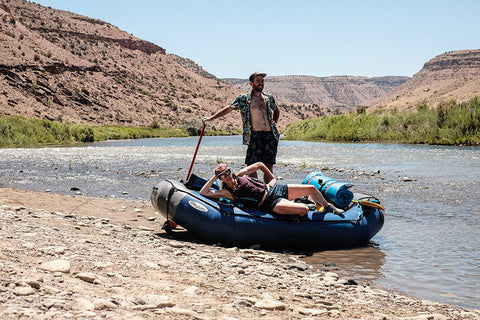
Picking The Best Campsite.
Most permitted trips will ask that you choose your campsite(s) before you hit the water. This helps prevent confusion or tension between different trips on the section. Do research before hand and have several campsites in mind for your group and get to the ranger station early to reserve your preferred camp. During the summer, you'll want to think about shade and tree cover and in the colder months you may want to think about where the sun might warm the camp. Also consider how large or small your group is and give everyone plenty of space to spread out and relax. Many camps have beautiful side canyon hikes to explore and some have creeks or archaeology sites to see.
Choose a site based on your groups interest and take plenty of time to enjoy it, maybe even schedule an entire layover day to relax and adventure. Wherever you choose, make sure to always secure your boat to shore with a bowline as the water levels can fluctuate overnight and send your boat down river without you.
Get Out and Float!
With these basic tips, you should have enough knowledge to put together a Multi-day trip on a section that you and your group can be comfortable on. Do your research and enjoy the adventure and whatever the river throws at you. Always remember to leave no trace and pack out everything you carry in and be courteous to other boaters, since they are just out there to enjoy the river too.
By: Jodi McConnell
Browse our gear HERE!



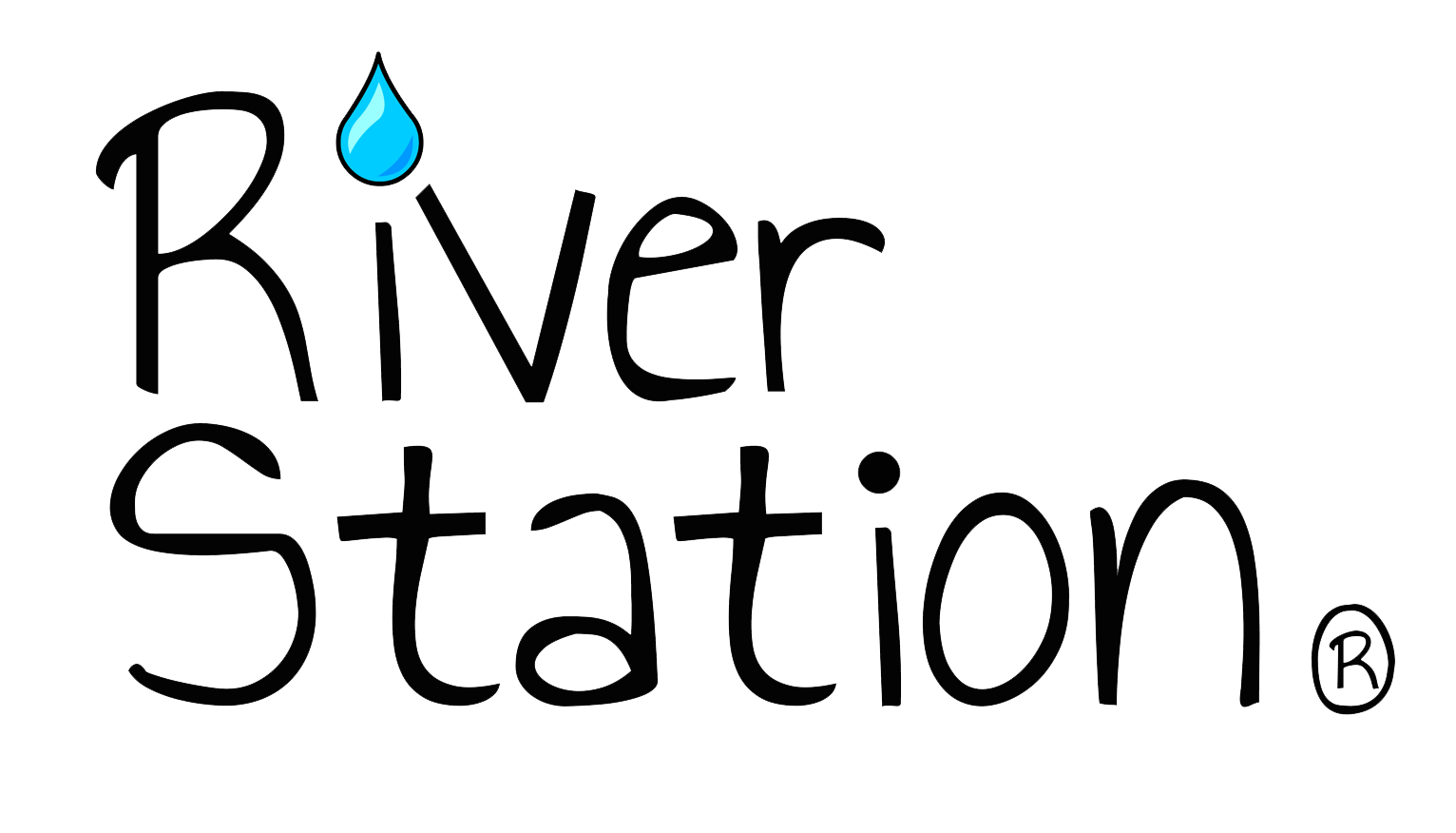
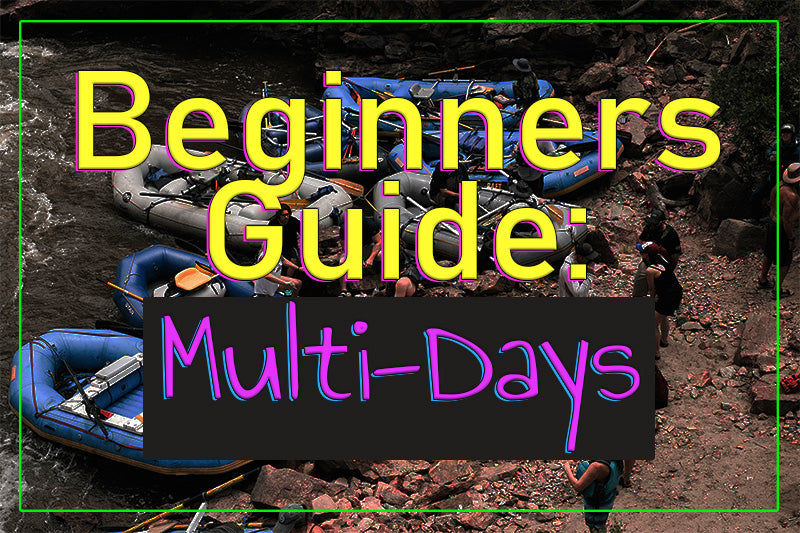
Share:
5 Alternative Whitewater Crafts to Master
Essential Gear for Raft Guides